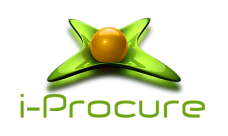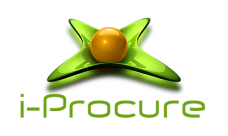Not a week goes by that I don't engage in conversation on sustainability in packaging. These conversations often involve common questions like what materials should I be using? What do the supermarkets want? What is the best material to use for the environment? Where do I even start to change what I am doing now? And understandably, how much is all this change going to cost me?
I know that businesses are more confused than ever about what direction to take with their packaging and are concerned about the cost of going "green." Let's unpack a little more on the topic of sustainability.
Now, sustainability is more than just a buzzword; it is the word, and it does need to be part of your strategy when planning out packaging for your products, regardless of what products you sell.
The challenge of making a change can be daunting, but it's also an opportunity that i-Procure can help with. We can assist you with cutting through the noise and allowing you to make informed decisions that align with growing retailer expectations and, furthermore, consumer expectations. Take the steps from your current position and become a brand/business leader in sustainable business practices.
Understanding the Landscape
The first hurdle in sustainable packaging is understanding what it truly means. What does good look like, and what is not acceptable within your region? This generally comes back to how waste is processed by local councils.
The market is filled with terms like "biodegradable," "compostable," "recyclable," and "eco-friendly." However, not all are created equal. For example, while a package may be labelled as "biodegradable," it doesn't necessarily mean it will break down in a landfill environment, where most packaging waste ends. There is also biodegradable, and “biodegradable” Where is your packaging coming from? This is important. What are the controls around the production of the packaging? Does your local waste facility process the materials in alignment with how they need to be processed to biodegrade?
To navigate this landscape, it's essential to understand the lifecycle of your packaging—where it comes from, how it's made, how it will be used, and what happens to it after its intended use. This allows you to make sustainable choices rather than follow trends.
Navigating Greenwashing
One of the significant sources of noise in sustainable packaging is greenwashing—the practice of making misleading claims about a product's environmental benefits. With sustainability being a key selling point, many companies are tempted to exaggerate or misrepresent their credentials.
To avoid this trap, look for certifications from reputable organisations like the Forest Stewardship Council (FSC), the Programme for the Endorsement of Forest Certification, and Sustainable Forest Initiative, and the Recycled Paperboard Alliance. These certifications provide a level of assurance that the claims being made are backed by rigorous standards applied and governed by the Australian Packaging Convent Organisation (APCO) in collaboration with industry and government.
Balancing Cost with Sustainability
Another challenge is the perception that sustainable packaging is prohibitively expensive. While it's true that some sustainable options can be more costly upfront, this is only sometimes the case. In fact, with advancements in technology and materials, many sustainable packaging options are becoming more cost-competitive.
Moreover, considering the total cost of ownership—factors like brand reputation, customer loyalty, and potential regulatory compliance—can make the investment in sustainable packaging more attractive in the long run. Customers increasingly favour brands committed to reducing their environmental impact, which can translate to a significant competitive advantage.
Understanding Consumer Expectations
Today's consumers are more informed and concerned about the environment than ever before. They are looking for products that meet their needs and brands that align with their values. This shift in consumer behaviour is a crucial factor driving the demand for sustainable packaging.
However, consumer expectations can vary widely. Some might prioritise recyclability, while others focus on reducing plastic use or minimising carbon footprint.
Understanding your target audience's priorities can help you decide which sustainable packaging options resonate most with them.
Staying Ahead of Regulations
This is a hard one. The last five years have seen the largest number of regulatory changes to what is and isn’t acceptable worldwide.
Landscapes around packaging are evolving rapidly. Governments in developed countries are implementing stricter regulations to curb environmental impacts, with a lot of noise around reducing plastic waste. This is a hard one to keep up with, particularly when it comes to plastics. In some cases, recycled plastics, especially, can have less impact on the environment than a biodegradable product—yes, it’s true!
Working with your packaging partner such as i-Procure to stay ahead of regulation changes is not only a way to ensure compliance but also an opportunity to lead the way in your industry.
Cutting Through the Noise
The world of sustainable packaging is complex and, at times, overwhelming. However, by understanding the key challenges and opportunities, you can cut through the noise and make decisions that benefit both your business and the environment. Whether it's by educating yourself on the nuances of different materials, avoiding greenwashing, balancing cost with sustainability, understanding consumer expectations, or staying ahead of regulations, we can help you navigate this space with confidence.
For businesses that have yet to prioritise sustainability, now is the time to start. The benefits are clear: a stronger brand, a seat at the table with your customer to discuss your innovation and a future-proofed business ready to thrive in an increasingly eco-conscious world.

